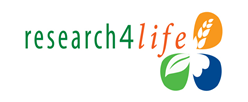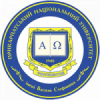Native Language Education in Ukraine and the Ukrainian Diaspora: Comparative Analysis at the Turn of the Century
DOI:
https://doi.org/10.15330/jpnu.1.2-3.305-310Keywords:
native language education, state language, bilingualismAbstract
The trends of development of native language education of Ukrainians living in Ukraine,
the USA and Canada have been analyzed. They are stipulated by globalization as well as
integration processes on a global scale in the end of the 20th and at the beginning of the 21st
centuries. Their dependence on state language and language education policies in Ukraine have
been grounded together with national consciousness of the Ukrainians whereas the western
diaspora dependence on external (language policy in the country of residence, assimilation,
assistance from Ukrainian part) and internal factors (national consciousness of Ukrainians in the
diaspora, their integration into different society, functioning of native language education, public
organizations) have also been reasoned.
The functioning of institutions in the USA and Canada have been studied (parents/family –
kindergartens – Ukrainian Studies Schools and Courses at Universities). Where the subjects in
Ukrainian Language and Systems of State Educational Institutions for young generations of the
American and Canadian Ukrainians are being taught.
The following key trends of native language education have been distinguished: bilingualism
(Russian-Ukrainian languages in Ukraine which, in general, has a negative impact on the status of
national language. English-Ukrainian languages in the USA and Canada which is an essential part
of the integration of national minorities representatives into the societies of these countries);
reduction of Ukrainian language speakers in the USA and Canada as well as in Ukraine; state
assistance in language teaching for ethnic communities/minorities in Ukraine and separate
Canadian provinces; seeking for efficient means and methods of teaching native language in
polytechnic / multilingual environments such as mountainous regions of the USA, Canada and
Ukraine.
The conclusion is that despite of assimilation and migration processes in the diaspora and
Ukraine, the need of Ukrainian language learning is growing. This is particularly connected with
the fourth emigration wave of Ukrainians who are willing to study their own language and obtain
appropriate education.











